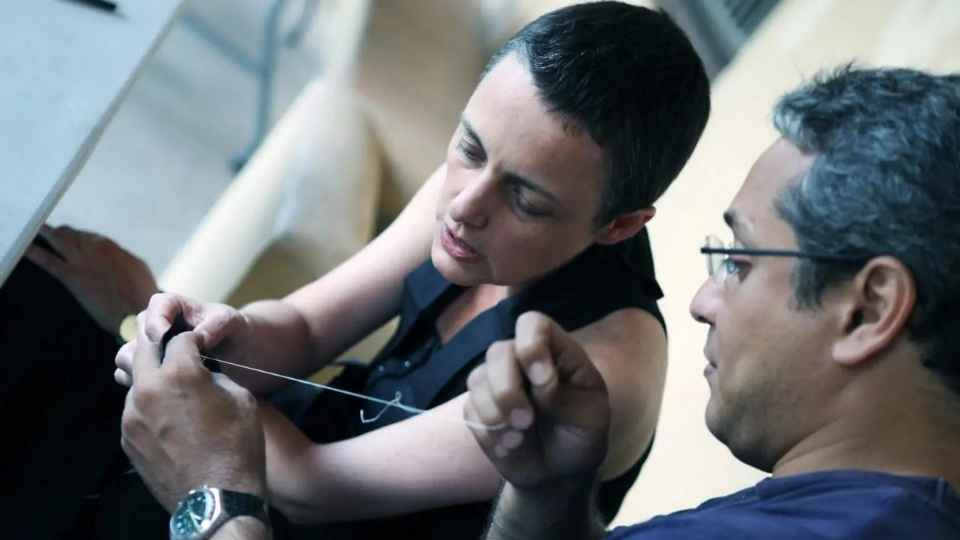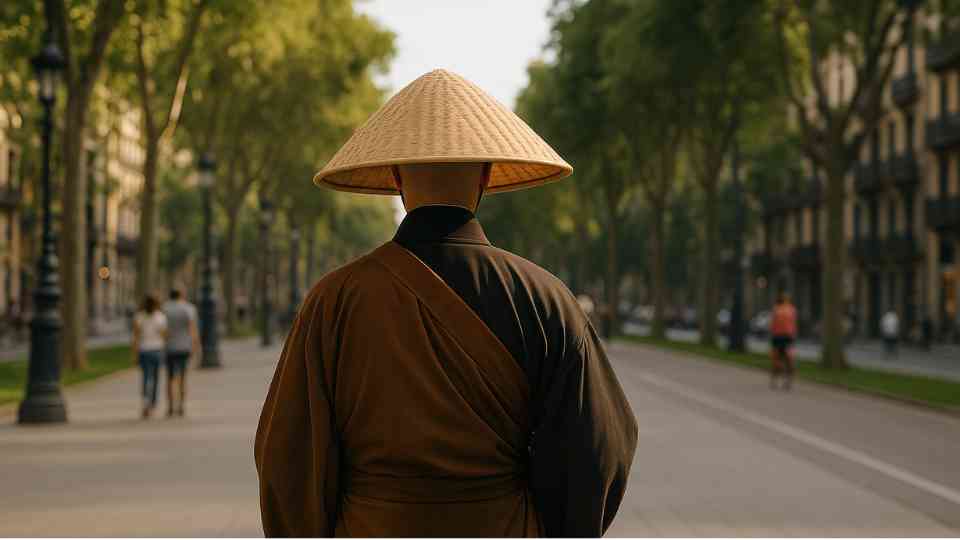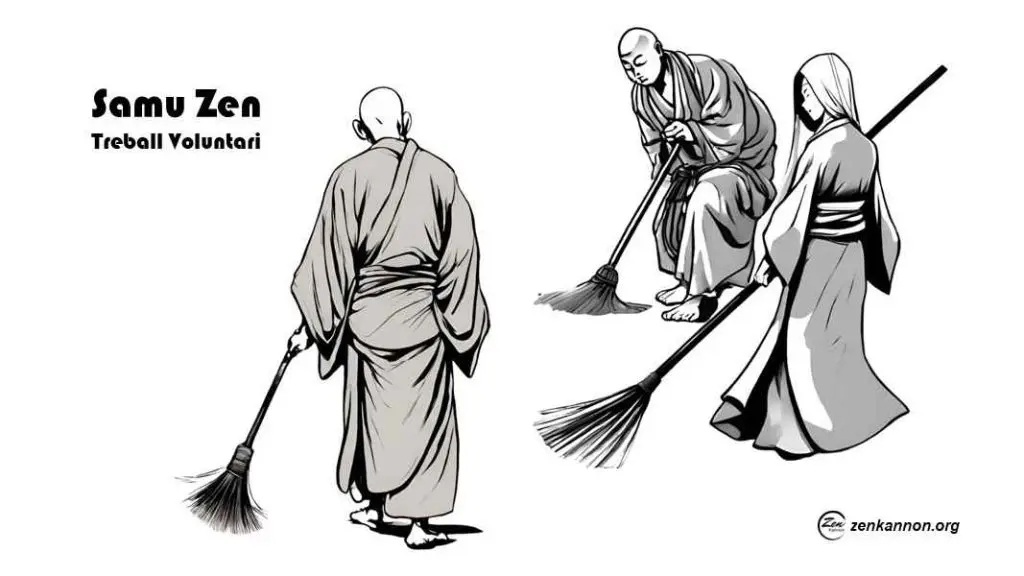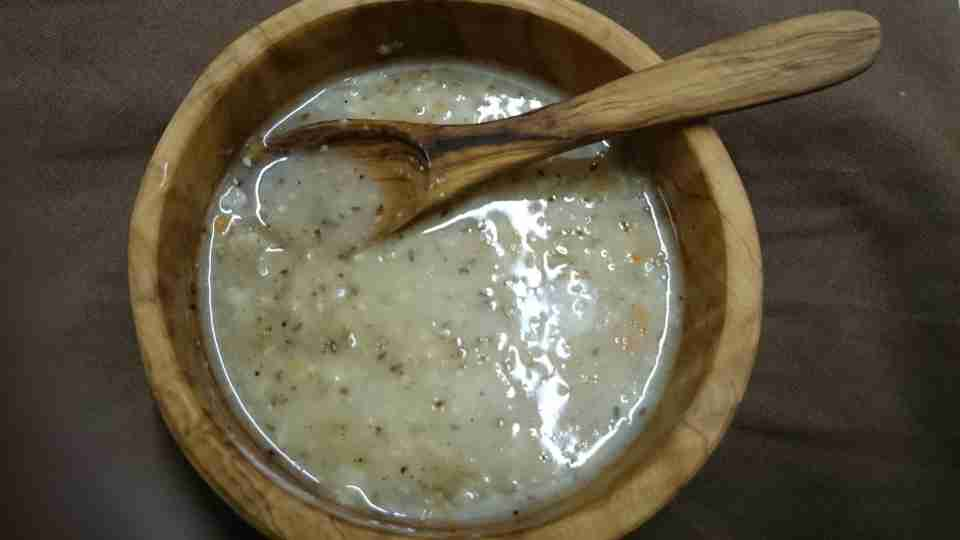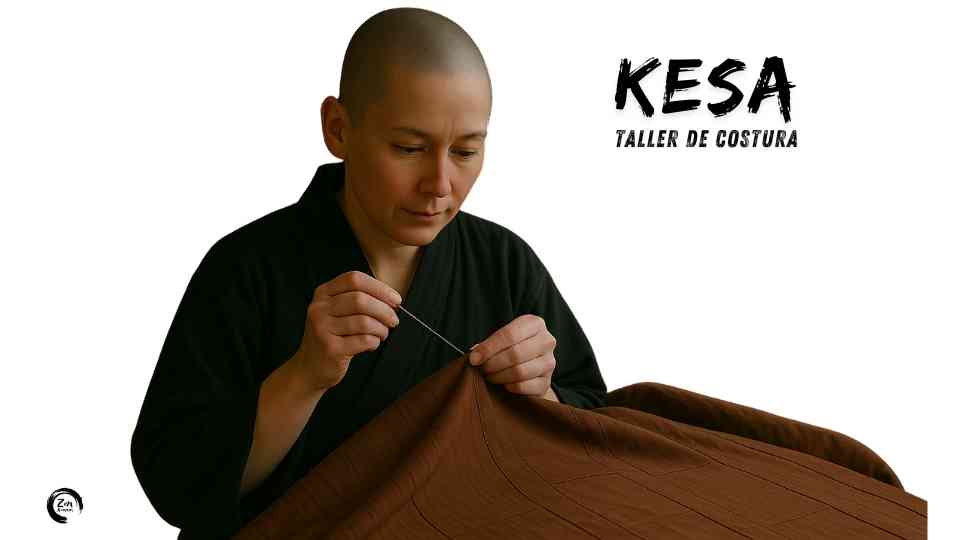Sewing a Zen kesa is a practice that helps people stay present and attentive. By focusing on the constant movement of the needle and thread, individuals can feel calm and aware. This helps their minds relax, and their spirits connect with the act of creation.
This mindful way of sewing turns the activity into a spiritual experience. Each stitch reflects how a person feels inside, helping them to understand themselves and the art of sewing more deeply.
The Zen art of sewing a kesa
Sewing the kesa in Zen, especially in the Soto Zen tradition, is a deeply meditative and spiritual practice. It is, in fact, considered a form of meditation. It often involves sewing ceremonial garments, such as the rakusu (a smaller version of the kesa). This practice of sewing in Zen means sewing according to the Dharma and is considered a form of Zen practice in itself.
Each stitch is made carefully. People work in silence, focusing and practicing mindfulness. In Zen communities, sewing a kesa or a rakusu is an important step. It helps a person prepare to receive teachings and the precepts. While sewing, they reflect on the lessons and their own commitments.
Sewing reflects Zen principles such as patience, mindfulness, and dedication. Sewing a kesa (the traditional Buddhist robe) is a profound Zen practice, usually performed with great care, mindfulness, and ritual. In Zen Buddhism, sewing a kesa is often guided by a master or experienced practitioner.
Steps for sewing a Kesa
Choosing the Fabric for kesa
Traditionally, kesas were sewn from discarded fabrics, symbolizing humility. Modern kesas may use new fabrics, but often in simple, muted colors. The kesa is made of many pieces of fabric, representing rice fields in India. Traditionally, five, seven, or nine strips are used, though larger kesas may have more.
Cutting the kesa Pieces
The fabric is cut into rectangular pieces (following a pattern) that are then joined to form strips. The measurements for each person follow traditional proportions. A kesa may have a specific number of strips depending on the monk’s role or the purpose of the robe.
Arranging and Pinning the Pieces
The fabric pieces are carefully arranged into strips, following the traditional kesa design. The pieces are laid out in columns or strips, and the strips are sewn together. The pieces are pinned to ensure that each piece is properly aligned before sewing. Each stitch is made with care, in a silent practice of mindfulness.
Mindfulness Sewing kesa
The sewing process is carried out slowly, with attention to each stitch. Each stitch represents an act of mindfulness and devotion.
In Zen, sewing mindfully is considered part of the practice. It reflects concentration and being present in the moment.
Sewing the Edges
The edges of the kesa are carefully sewn around the body formed by the strips. This involves folding the fabric and making small, even stitches. The edge serves to frame and protect the kesa. This part of the process requires extra attention, as it ensures that the kesa has a firm and lasting finish. Sewing the edges is an act of completion and attention to detail, also performed in a state of mindfulness and dedication.
Final Touches
After completing the main body of the kesa, the practitioner usually adds a piece to tie it, the ties. These final elements are carefully sewn into place. Once the kesa is fully sewn, it is checked to ensure that all the seams are firm and the design is balanced. These final touches are performed with the same mindfulness and dedication as the entire sewing process, marking the conclusion of this spiritual practice.
Spiritual and Symbolic Aspects of Sewing a Kesa
Sewing a kesa is not just a manual task, but a profound spiritual practice. Each stitch is made with mindfulness, representing the practitioner’s connection to the teachings of the Dharma. The kesa, made of multiple pieces of fabric, symbolizes the interconnection of all things and humility, as it was traditionally made from discarded fabrics.
The process of sewing the kesa also reflects Zen principles of patience, dedication, and being present in each moment. Each stitch is an act of devotion and respect for the Buddhist tradition. Similarly, the way the kesa is organized, mimicking the rice fields, symbolizes life in balance and harmony with nature.
Sewing a kesa, according to the Soto school, is both an expression of one’s spiritual path and a form of preparation to receive Zen teachings, connecting the act of creation with daily spiritual practice. The kesa is our Zen temple.
Practicing with a zen master
Sewing a kesa under the guidance of a Zen master is a deeply enriching experience. The master not only teaches the correct sewing techniques but also conveys the spiritual and symbolic significance of each step in the process. Working under the direction of a master ensures that the practitioner maintains mindfulness and proper focus on each stitch, strengthening their meditation practice while sewing.
Taisen Deshimaru said: “Zazen is the Dharma of the Buddha, the kesa is the robe of the Buddha, and both are one.”
The Zen sewing master also guides the student in the correct attitude toward sewing, fostering patience, humility, and respect for tradition. This interaction between master and student deepens the understanding of the kesa as a tool for personal and spiritual transformation.
Fuse: The Gift of the Dharma
Fuse is a Japanese word that in Zen Buddhism refers to the practice of dō,…
What does it mean to be a Zen person?
A Scientific Study on the Zen Personality Can we talk about being a zen person?…
Samu: Cooperating volunteers in a Zen Community
Samu: Cooperating volunteers in a Zen Community Cooperating volunteers is undoubtedly one of the most…
The Zen Art of Sewing a Kesa
Sewing a Zen kesa is a practice that helps people stay present and attentive. By…
2026/01/17 Guenmai. Rice Soup
Guen Mai Rice Soup Guen Mai is the rice soup consumed every morning after the…
2026/01/17 10:15 Zen Kesa sewing workshop
Saturday there is a kesa sewing workshop. Sign up using the form. Origin of the…

